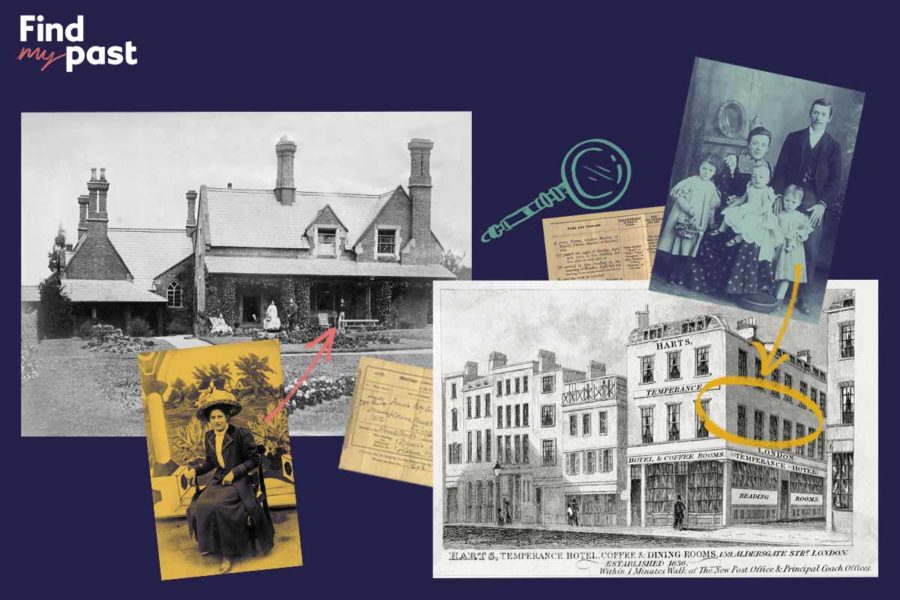
Home has become more important than ever. Covid-19 lockdowns have seen us spend more time at home than ever before and TV programmes like A House Through Time have made many of us wonder what stories our walls would tell if they could talk.
There’s never been a better time to unlock the incredible story of your house and the experts at family history website Findmypast are here to help. Club+ members can enjoy a 20% discount on a subscription.

Getting started
To discover your house’s history, you’ll need to explore old documents relating to it. Before you begin, it’s usually best to establish a few key points to direct you in your research.
Your first step is to try and get a rough estimate of how old your house actually is. This can be established by reading up on the history of the local area, by talking to neighbours who have lived in the area for a long time or other knowledgeable members of the community.
Look for visual clues. Does the style of your home give an indication of when it was built? What materials were used and is it different to other properties on the same street?
For example, Victorian houses can usually be identified by their slate roofs, bay or sash windows, distinctive brickwork and lack of a garage.
In some cases, the date of construction may even be carved onto the building.
Find out which administrative area your house is in. Knowing the county, registration district and parish in which your property stands will help significantly with locating relevant records.

Be your own archaeologist. Have you found anything interesting while working in the garden? Shards of discarded pottery and old masonry may reveal clues that predate your house.
REMEMBER! – Street numbers and names often changed over the course of time, especially in the late 19th and early 20th centuries. Compare the location of your property with other buildings in the street to make sure that you are looking at the right house.
Owners or occupiers? It was much rarer to own your house in times gone by.
Until around 1914, approximately 90% of all housing in Britain was privately rented.
This trend began to reverse with the 1915 Rent Act that prevented landlords from exploiting the increased wages of munitions workers.
This was the start of a whole series of legislative acts designed to protect tenants and by World War 2 home ownership was on the rise while renting declined.
By 1990, as few as 12% of the population were renting privately.
For much of your home’s history, the occupant may not have been the owner so bear this in mind when examining records.
Title Registers and Deeds will provide you with key details about previous owners. This might include leases, conveyances, mortgages and more.
If you have these tucked away at home already, be sure to dig them out. If not, you can request them from solicitors and mortgage providers and in some cases, local archives and council record offices.
They can also be ordered online from the Land Registry. For England and Wales, visit https://www.gov.uk/government/organisations/land-registry, search the register for free and fill in a request form. For Scotland visit https://www.ros.gov.uk/.
Tracing occupancy online
Now that you have covered the basics, it’s time to use that information to turn detective and dig deeper on the internet. Luckily, sites like Findmypast provide extensive resources for tracing your house’s history online.
Census records
Censuses were taken every ten years from 1801. Complete records for England, Wales and Scotland from 1841 to 1911 are easily accessible online at Findmypast and other websites.
Every census record includes addresses. They also list the name, age, birthplace and occupation of each member of a household as well as their relationship to the “head” of that household (son, wife, mother etc.)
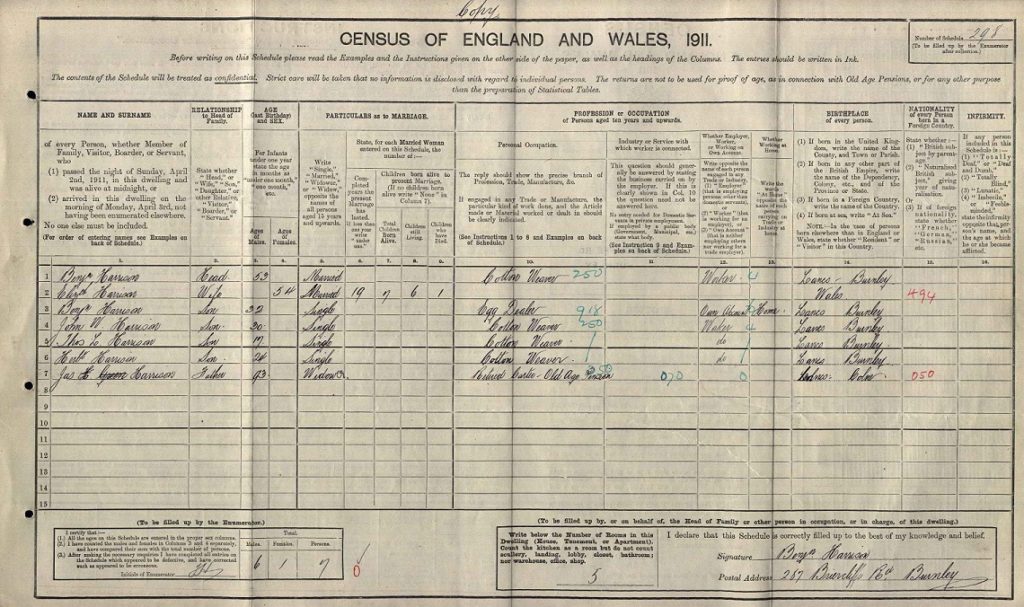
One of the most valuable elements of census records is that they document the details of everyone in the house on census night. This includes children, servants, visitors, and lodgers, many of whom were often not recorded in other sources.
Only at Findmypast, you can search UK census records by address to quickly and easily pinpoint a property.
Electoral rolls
Electoral rolls and registers offer an incredibly detailed insight into not just the history of our democracy, but the history of our homes but REMEMBER – at different times in history, not everyone was eligible to vote.

Taken each and every year (and sometimes biannually) they are the best way of tracing occupancy between censuses.
Individual entries can include a name, address or abode, a description of the property, and the landlord’s details.
Once you have found the address you are looking for, it’s usually easy to follow it through subsequent registers to see how the occupancy changed over time. The names and details of any occupants you discover can then be used to search other records.
1939 Register
The 1939 Register is one of the most important documents of 20th century England and Wales. It records the details of every person and property in England and Wales at the outbreak of the Second World War.
The Register will tell you who was living in a property at the time and what they did for a living.

It records the details of every household member (including visitors, boarders and servants) and the original documents often list the details of neighbouring properties. On Findmypast, each search result also includes three ordnance survey maps (present day, 1930s and 1880s/90s) and infographics highlighting the demographics of the area.
The 1939 Register was divided up into registration boroughs, districts and counties and can be easily searched by address at Findmypast.
The 1931 Census was destroyed by fire. No census was taken in 1941 because of the war. So the 1939 Register is the only national census-like resource available for this period.
Tax records
Rate books recorded how much tax householders paid, making them a really useful resource for finding out who occupied your house generations ago.
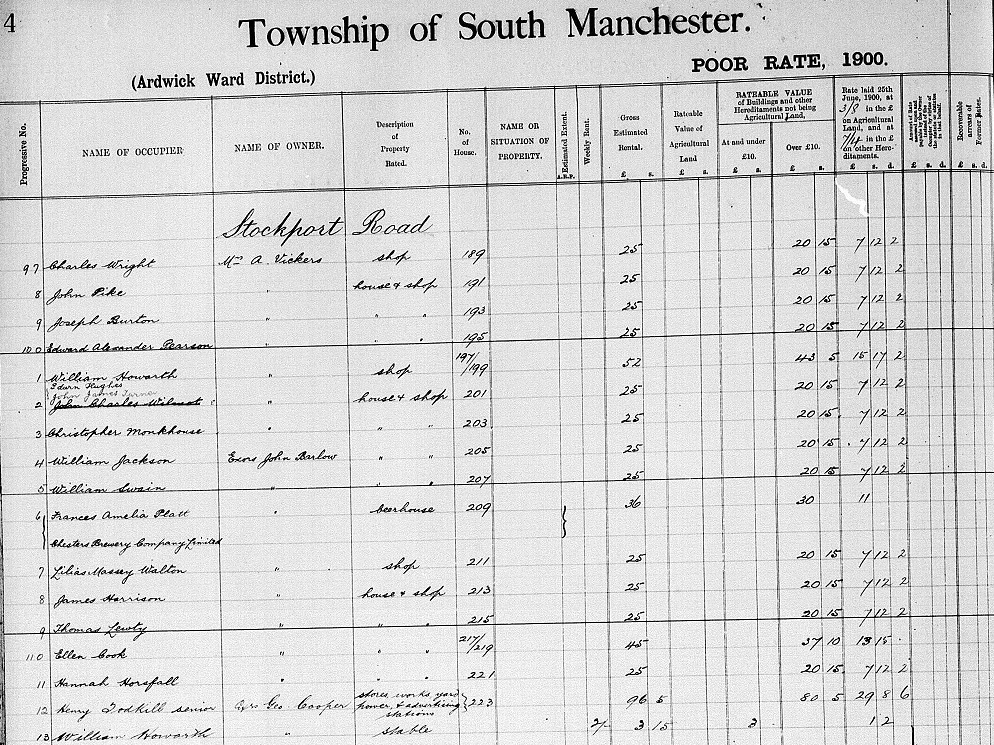
The rich detail included about the house can mention the occupier’s and owner’s names, a description of the property at the time the record was taken and the amount paid for it.
Hearth tax records were based on the number of hearths in a property. Returns can be found online and at local archives.
Land tax records are still found in many county record offices and tend to survive from the late 18th century through to around 1832 (although many date from earlier). They were used to prove eligibility of landowners to vote until electoral rolls were introduced in 1832.
Valuation Rolls are essential for Scottish house history research. They allow you to trace owners, tenants and sometimes both. Valuation rolls were local tax records which listed properties and people for each Scottish county and burgh between 1855 and 1996.
Local taxes were based upon the rental value of a property, the assessor for each county or parliamentary burgh would compile an annual valuation roll, listing most buildings and other properties in their areas along with the names and designations of the owner, tenant and occupier and the annual rateable value.
Other assessed taxes on property and possession exist (such as window tax from 1696), mainly at The National Archives and other local archives.
Directories & social history records
Directories and almanacs were essentially early Yellow Pages. They are a great way of exploring the makeup of a local area and looking up specific addresses.
Directories are useful for tracing house and business history because, by their very nature, they always include addresses along with details of the owner/occupier and their business.
They first began as lists of tradesmen, hence the name ‘trade directory’, but eventually became more detailed and provided details of residents at most addresses. However, they were a commercial product, so can contain errors.
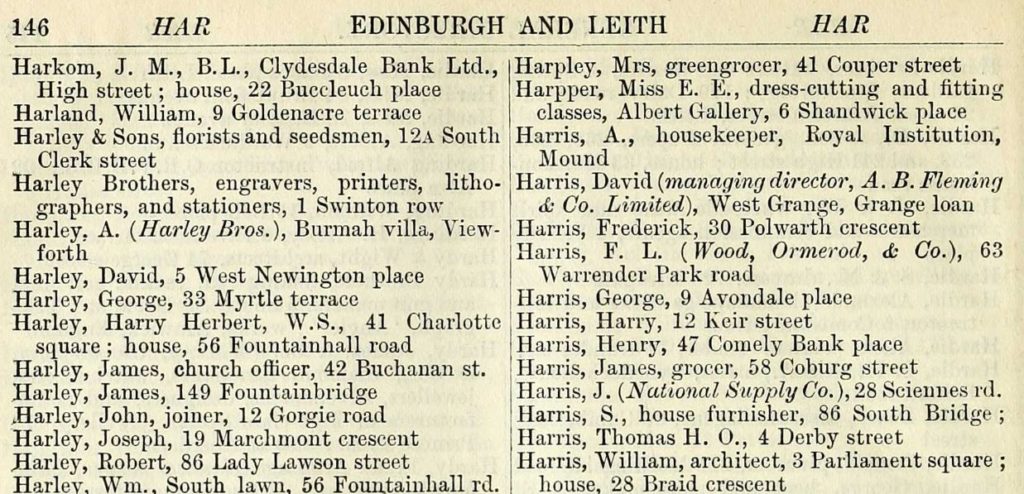
The majority of post directories include a description of the place, along with lists of people by occupation. For example, you will find lists of magistrates, councillors, sheriffs, police officers, and merchants. It’s important to remember that post directories are not complete lists of all the residents in the town or county. Also, many fail to include women in their lists.
There is a vast range of directories available online from official Post Office listings through to trade almanacs and business indexes.
Newspapers
Old local newspapers are one of the most detailed sources you can look at when tracing your house history. You may even find old photos or sketches of the property or former residents.
Exclusively at Findmypast, you can delve into millions of online newspaper pages from every corner of the UK and Ireland.
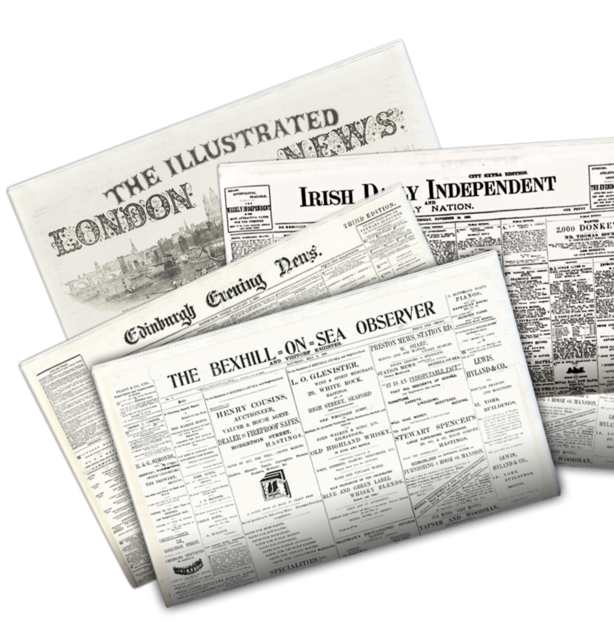
Few of the privacy laws that we know today applied in the past and addresses would often appear alongside names in news reports.
These historical treasure troves can reveal whether anything noteworthy happened in your street and allow you to view major historical events through a local lens.
Maps
Maps give house historians a bird’s eye view of properties and their positions within the surrounding area. One of the most useful is the detailed maps from the Ordnance Survey, which can be viewed online in several places. Every town and city will have their own including specific town and parish maps. Unique maps were also produced to document disease and demographics, like the Charles Booth Poverty Map for London. Some maps were produced at key times when changes to taxes and land ownership were put in place, such as the Tithe map (c.1840s) and Enclosure map (usually late 18th century).
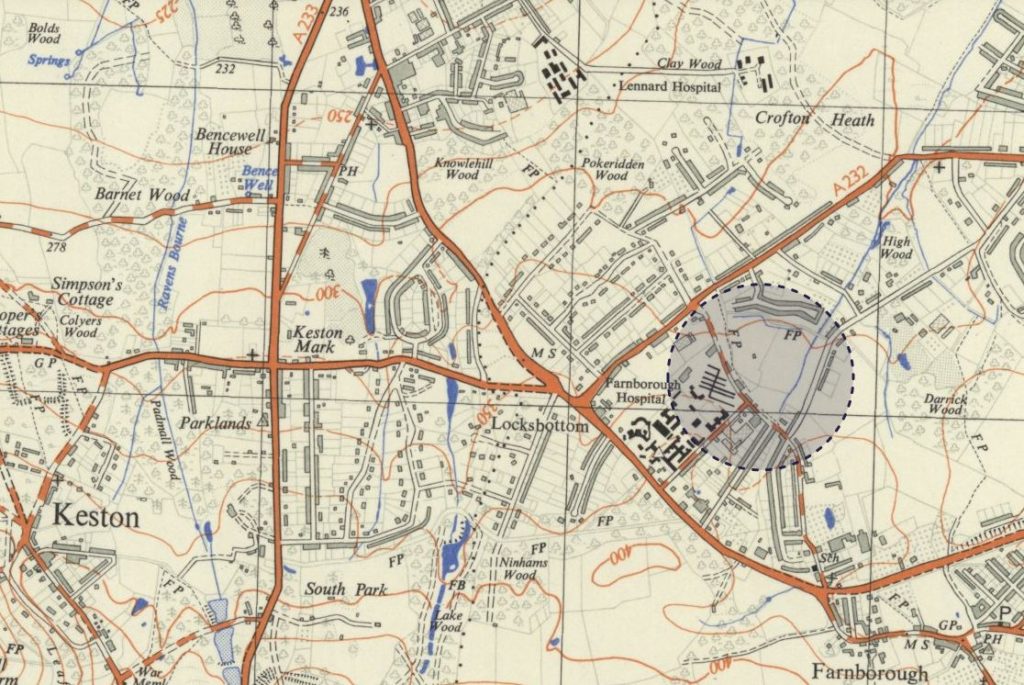
Findmypast features an exclusive map search that enables you to easily locate properties on historical maps from 1888, 1939 and the present day, like a modern-day GPS. Simply tap in your address, postcode or town/village to see how the area has changed over time.
The National Library of Scotland website provides access to free high-resolution, zoomable images of over 200,000 maps covering Scotland, England, Wales and beyond.
Parish records
Dating all the way back to 1538, church registers of baptisms, marriages and burials usually recorded residence.
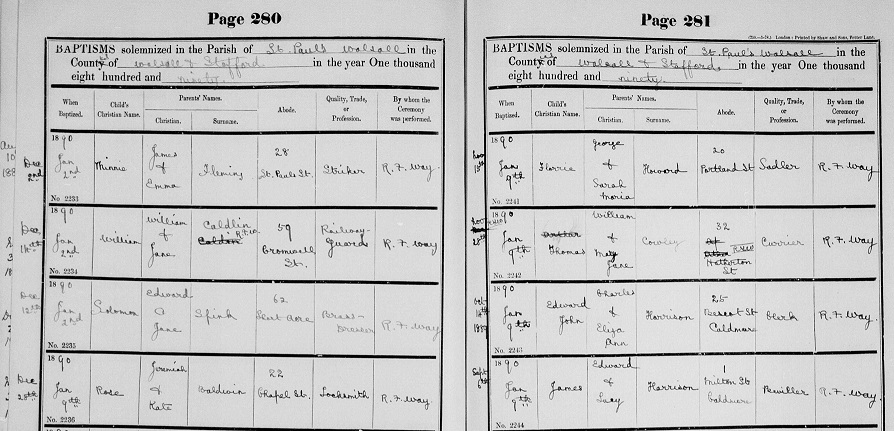
Court and probate records
Wills and administrations often contain addresses as property was nearly always bequeathed.
Court records (petty sessions, criminal courts etc.) often record the addresses of defendants, witnesses, and victims.
Take your research offline
For the bigger picture of your house’s history, you really need to get out there.
Visit your local archive service. Not only are they staffed by local experts who will be more than willing to help, they are home to a wide variety of material you won’t find online including;
Miscellaneous estate maps and plans relating to the local area. There is also a series of national records that contain additional information about individual properties. Maps and plans can help you discover why your house was built in the first place. Was it a cottage for workers at a nearby factory? Or a new-build replacing a house that was bombed in the 40s?
Titles deeds and conveyancing that record the transfer of land or property, such as leases, indentures, sales etc. combine to form the ‘deed package’. These are valuable for tracing property ownership.
Contact your local history society or join a group on social media (there are many excellent groups and forums out there).
House history research can be made much easier with the help of fellow locals and history enthusiasts.
Every house has a story. Discover yours today with Findmypast.
Club+ members offer
Enjoy 20% off a 3 month or 12 month Plus or Pro subscription to Findmypast.
